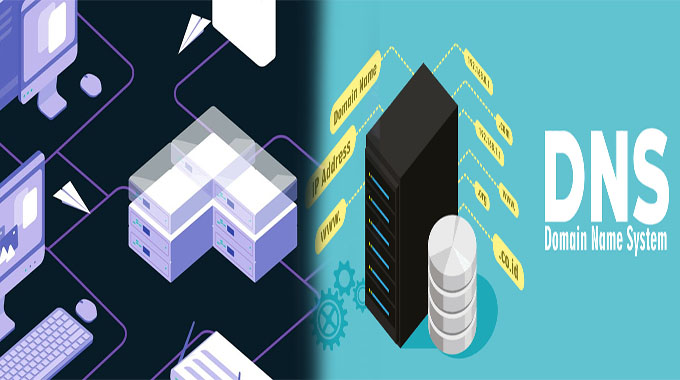The Domain Name System (DNS) is one of the most important elements of the internet, but it’s also one of the most complex. Understanding how DNS works not only helps you get around in your browser, but also empowers you to better understand and troubleshoot websites that run on servers. With this beginner’s guide to DNS, I’ll introduce you to everything from basic concepts like domain names and domain name servers to advanced topics like name records and record types. We’ll cover authoritative vs. recursive name servers; how they work together; what changes when a domain is transferred; why some sites give you bad results when they’re not responding properly; plus much more!
The domain name system, or DNS, is a system of computers that translates human-readable website names into machine-readable IP addresses. In other words, when you type “google.com” into your browser’s address bar and press Enter, the DNS servers translate that text into an IP address for Google’s servers to receive your request.
Google has many servers scattered around the world which store copies of its website and serve them up when people visit them from different locations (this is known as geo-distributed content). By using DNS lookup services like OpenDNS or Cloudflare’s free 1.1.1dot1dot1dot1tld service we can see how those servers are distributed across different regions:
DNS Basics
The Domain Name System (DNS) is a hierarchical system of name servers that translates human-friendly domain names into IP addresses. It is a distributed database, relying on its users to maintain it and keep it accurate. DNS uses UDP on port 53 for communications between client and server, and TCP on port 53 for zone transfers between primary and secondary servers.
It’s important to note that DNS is not an application layer protocol; rather, it’s an application layer service provided by the Internet Protocol Suite (TCP/IP).
How Does DNS Work?
DNS is a distributed database. This means that when you look up a domain name, the information is stored on multiple servers around the world. When you type in “google.com” into your browser and press Enter, it sends a request from your computer to one of these servers asking for its IP address (the numerical representation of where Google’s server can be found on the internet). The DNS server will then provide this information back to your computer which then connects directly with Google’s website through its IP address connection and displays its content on screen for you to see!
DNS Names and Records
A domain name is a unique identifier for a website, similar to your phone number or email address. A domain name consists of two parts: a top-level domain (TLD) and subdomain. The TLD is the part that comes before “dot,” while the subdomain is everything after it. For example, if you wanted to visit Google’s homepage (www.google.com), then “google” would be your TLD and “com” would be your subdomain; together they make up what we call www dot google dot com or simply www dot com (for short).
A zone is any group of records contained within one zone file on one DNS server; this could include all records for one domain name or multiple domains hosted on the same server. If there are multiple zones hosted by one DNS server then each zone must have its own IP address so that clients know which records belong where when resolving queries against them–this means that most web servers hosting websites will need two IP addresses: one for HTTP traffic and another dedicated solely towards resolving queries against their DNS nameservers’ zones!
Authoritative vs. Recursive Name Servers
Authoritative name servers are the ones that are responsible for the domain zone files. They contain all of the information about your domain and where it points, as well as any other domains that you own. These authoritative name servers also respond to queries from recursive name servers (i.e., those that respond to DNS queries). If someone types in a website address, like http://www., they will send their request to an authoritative server and ask what IP address corresponds with this URL. The authoritative server will then reply with an answer containing all of this information so that the client can connect with the correct server or host computer on their network
Types of DNS Records
The DNS records you’ll most often see are A, CNAME, MX and TXT. They each serve a different purpose and have their own specific uses.
A: The A record is used to map a domain name to an IPv4 address (i.e. 199.7.61.238). This is the most common type of record because it associates your website with its IP address so that people can find it when they type in your website’s URL into their browser or search engine query box (e.g., “www” followed by “.com”).
CNAME: This stands for Canonical Name Record; it’s used when you want to create aliases for other domains on your server such as www vs non-www versions or multiple subdomains like blog1 vs blog2 etcetera.. You could also use this type of record if you wanted one hostname pointing at several IP addresses rather than just one single destination address like www1 instead of www10 through 20 etcetera..
It’s important to know how the DNS works if you’re a web admin or developer.
The Domain Name System (DNS) is a critical part of the Internet. It’s a distributed database, hierarchical system and naming system that allows users to access websites by entering their domain names instead of their IP addresses. The DNS also acts as an internet service provider for other services like email or FTP because they have no way of knowing what server you’re trying to connect with without it.
The best way to understand how this works is by looking at an example: when you type “examplewebsite.com” into your web browser’s address bar, it sends this information via TCP/IP packets over the Internet until they reach their destination server (which may be located halfway across the globe). Once there, those packets are decoded so that your browser can display content from that website onscreen–but only if its IP address has been mapped correctly within one or more zones within your local DNS system!
The DNS is a critical part of the internet and it’s important to know how it works. This guide was designed to give you a basic understanding of how this system works so that you can better understand how your website or app uses it.














